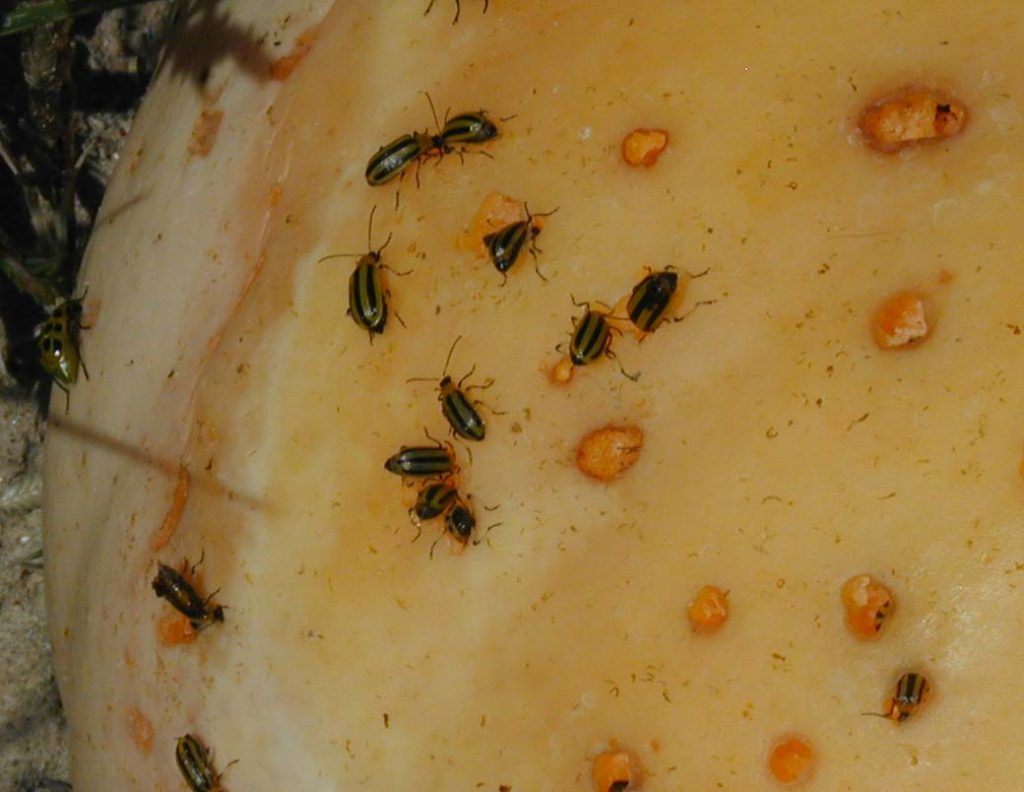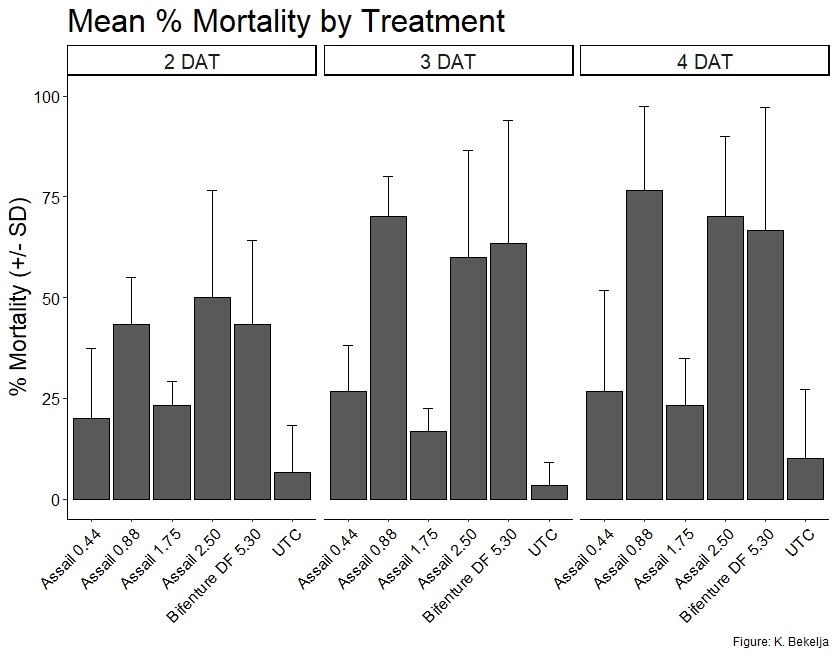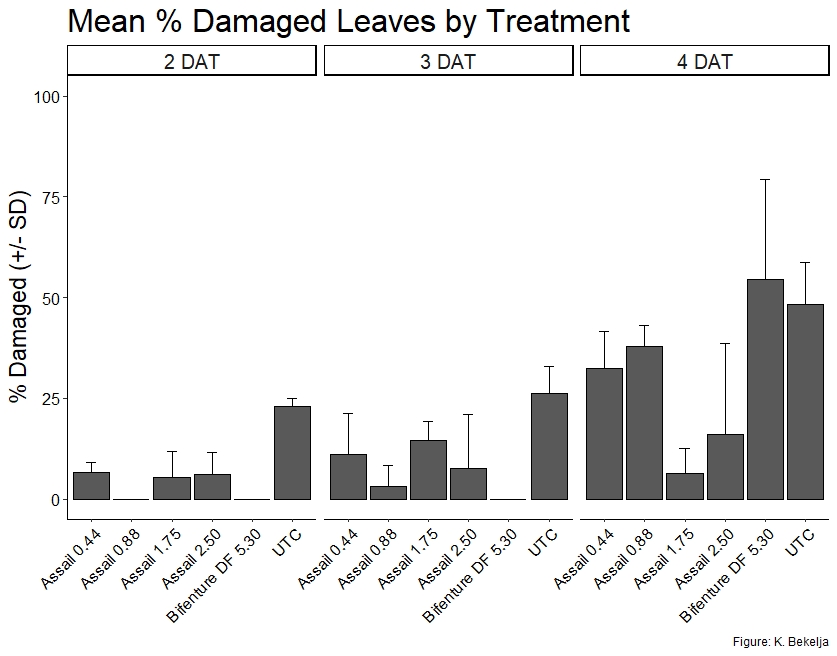By: Kyle Bekelja, Kelly McIntyre, and Thomas Kuhar

Insecticides
It’s late in the growing season, which means many cucurbit growers, especially those growing pumpkins, need to start thinking about how they’re going to keep their fruit looking pretty for the coming weeks! Table 1 shows a list of insecticides and their effectiveness against a few key pests of cucurbits based on insecticide evaluations, their preharvest-intervals (PHI), and their relative bee toxicity rating (i.e., high, medium, low).
Table 1. Insecticides for managing key pests of cucurbits. Effectiveness rating scale: E = excellent; G = good; F = Fair; P = poor (credit: Thomas Kuhar)

Insecticide Evaluation
In the lab, we tested Assail 30SG at four rates (0.44, 0.88, 1.75, and 2.50 dry oz/acre) for its effectiveness against cucumber beetles. We looked at percent mortality and percent damaged leaves for each treatment.

Although the percent mortality was relatively low for Assail at the 1.75 rate, as shown in Figure 2, it still seemed to have prevented beetles from feeding on plant material, shown in Figure 3.

Assail 30SG prevented cucumber beetle feeding, and outperformed Bifenture DF four days after treatments were applied at the 1.75 and 2.50 rate (Figure 3). Although % mortality was low at the 1.75 rate (Figure 2), it appears that feeding was still prevented.
Assail 30SG has the added benefit of being less toxic to bees than many other options, and has a short preharvest interval. Regardless of your chemistry, try to avoid spraying while pollinators are active!
